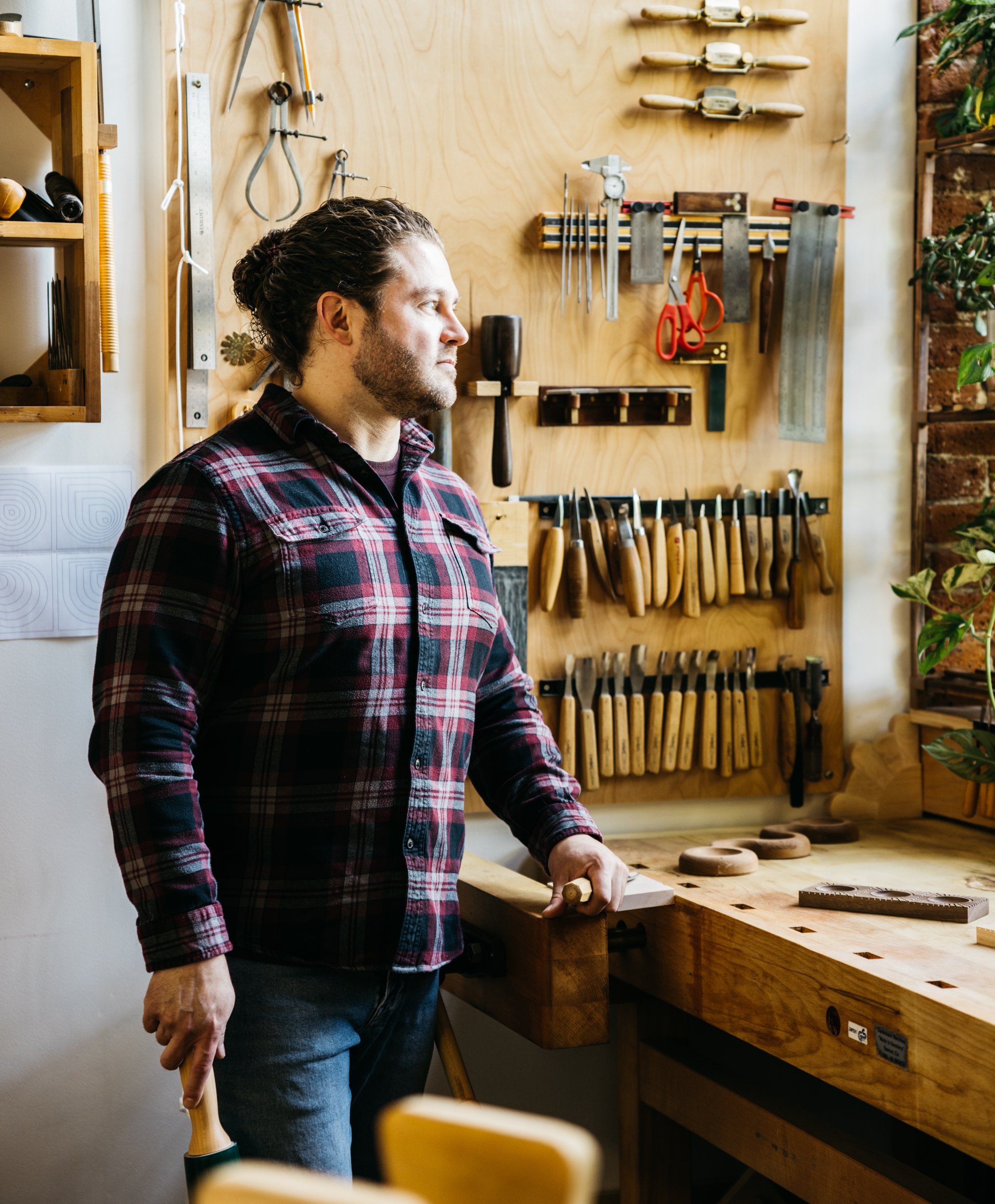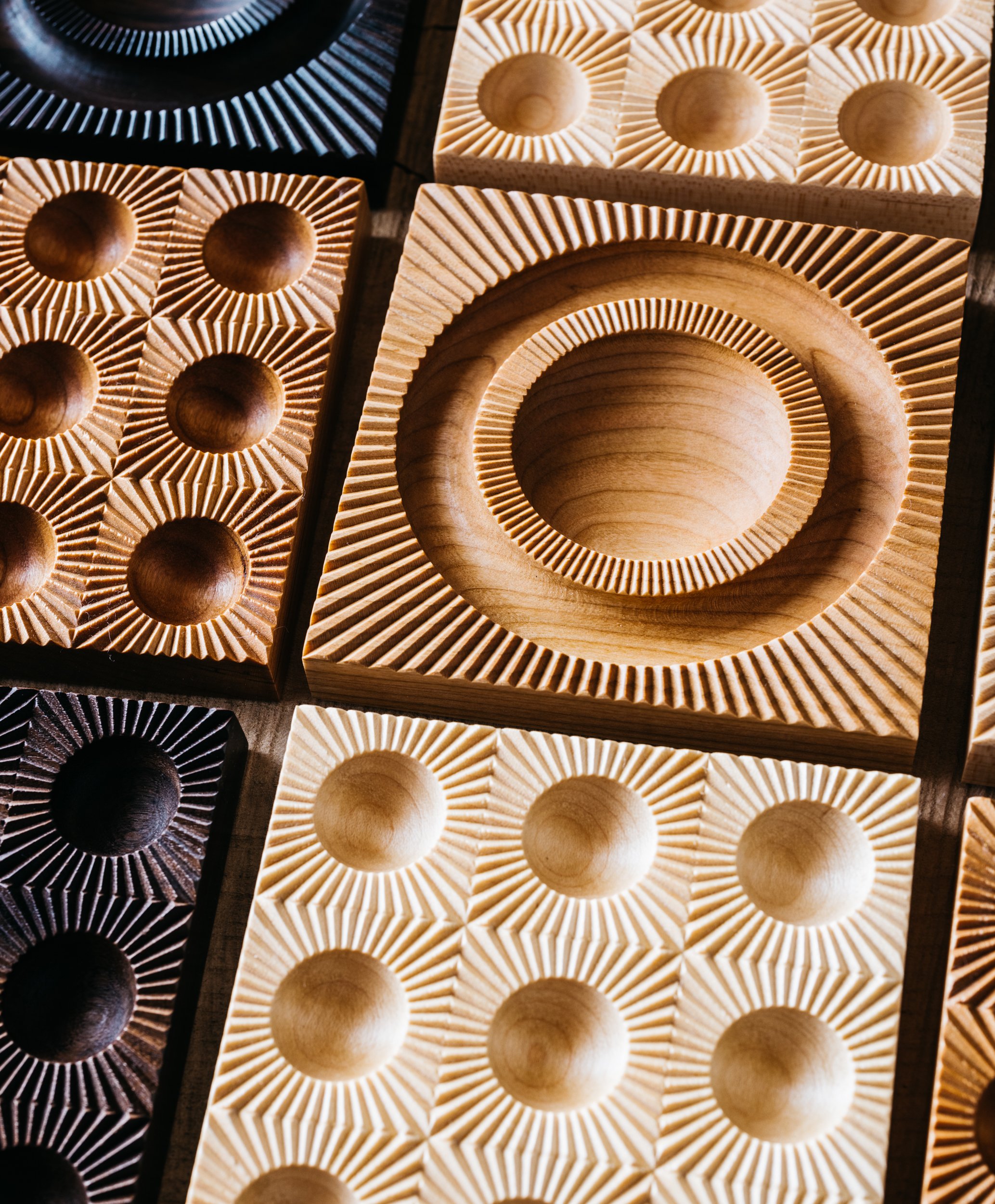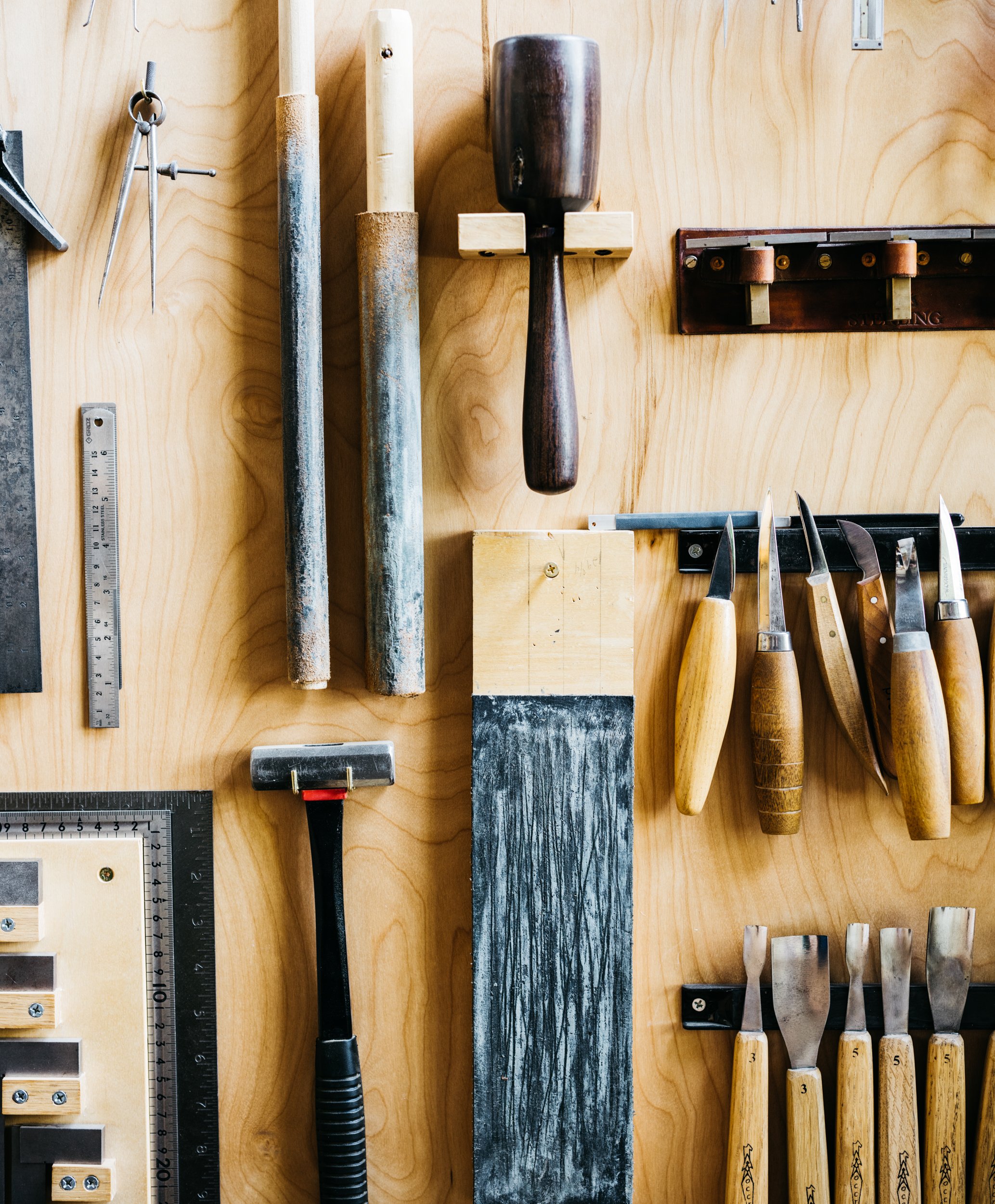Edible Makers: John Francis Designs
Photos by Michael Piazza
The elegant cherry grandmother clock sitting in the front room of John Welch’s North Chelmsford woodworking studio space doesn’t currently function, but it keeps time in another way—by connecting him to his roots. The clock was hand-built by his great-grandfather, who not only was a woodworker himself, but worked as a teenager in the very same mill building, as a “grease monkey” for the wool-carding factory that first occupied it. (Grease monkey was the name given to the young men who were the only ones small and nimble enough to climb into the rafters and inside the machinery to keep it all well oiled.)
Like his great-grandfather, Welch always enjoyed working with his hands. He first took up woodworking when he bought his Lowell townhouse in 2009, using the newfound skill to replace crown molding and flooring here and there. The house was relatively new construction, however, so it didn’t take long before he ran out of renovation projects. A chance encounter with an online video and a general love of cooking inspired him to try his hand at spoon-carving. Soon afterwards, he began making other kitchen tools as well, like cutting and serving boards.
Space constraints at home sent him in search of a dedicated workspace, and he signed a lease on a modest studio space in downtown Lowell. Initially, the idea was just to have someplace to tinker on nights and weekends for fun, but when he decided on a whim to participate in the building’s monthly open studio days, interest in his wares began to grow, and his company, John Francis Designs, was born. He soon started teaching spoon-carving classes with up to four students at a time, which—with students excitedly sharing images of the spoons they made on social media—kicked things into high gear.
In 2020, with in-person carving classes put on the back burner, Welch started looking for new projects and began to play around with carved tools for pasta-making. (Welch is not Italian, but for nearly the last 20 years his day job has involved designing and manufacturing pasta extrusion dies for a Lowell-based company, so the move makes sense.) Inspired by cavatelli and gnocchi and the coin-shaped, stamped pasta known as corzetti, he wondered whether other styles of fresh pasta would hold an imprint, and decided to try making ravioli molds.
Ravioli are made by sandwiching dollops of filling between two sheets of rolled pasta dough, pressing the sheets together and dividing the resulting sheet into individual pieces. A mold can help to corral the filling, allowing a chef to produce more uniform shapes and to work with more delicate fillings, like whole egg yolks. And it affords the opportunity to add decorations around the flat parts of the dough; to get the impressions to form while marrying the sheets of dough, you run over the back of the ravioli with a rolling pin.
Welch carved his first mold in September 2020, a single-well Art Deco–inspired model surrounded by flowers and leaves. When he shared a picture of the mold and the raviolo it produced on Instagram, it garnered more interest than anything he’d posted previously. He settled on a few different designs and began selling them officially a few months later. Since then, sales of the ravioli molds have grown steadily; in 2021, he sold around 250, and expects to sell nearly four times that many in 2022. The first few were all carved by hand, which took four to five hours each. Eventually Welch switched to using a computerized CNC router, which can produce a single-well mold in about 30 minutes. (Using a CNC also allows him to create detailed, Escher-like repeating motif patterns around the mold that would be challenging to carve by hand.) Even so, each piece requires another 90 minutes of hand work to sand it smooth and give it an impermeable finish with a food-safe oil.
He’s since introduced numerous new designs: a “doppio raviolo” with space for two separate fillings, each in its own well, like Saturn surrounded by its rings, and ravioletti molds that form two, six or nine mini-ravioli in one go. He’s also created molds with unusual well shapes, such as one that forms Tic-Tac-Toe–like Xs and Os, and a sun and moon, side by side. Recently he started selling gnocchi boards, each one decorated with a variety of different repeating patterns; to make handmade pasta like gnocchi or cavatelli, you roll knobs of dough under a fingertip across the textured board to form sauce-catching ridges.
Welch’s creations are miniature artworks, the sort of thing you might display prominently on a kitchen shelf. But they are also meant to be used. As Welch says, “I think people are too precious about nice things, and save things for the holidays…. [I say], use the nice spoon, make a cheese plate on a Tuesday night! Why not?”
Why not, indeed.
This story appeared in the Winter 2023 issue.



